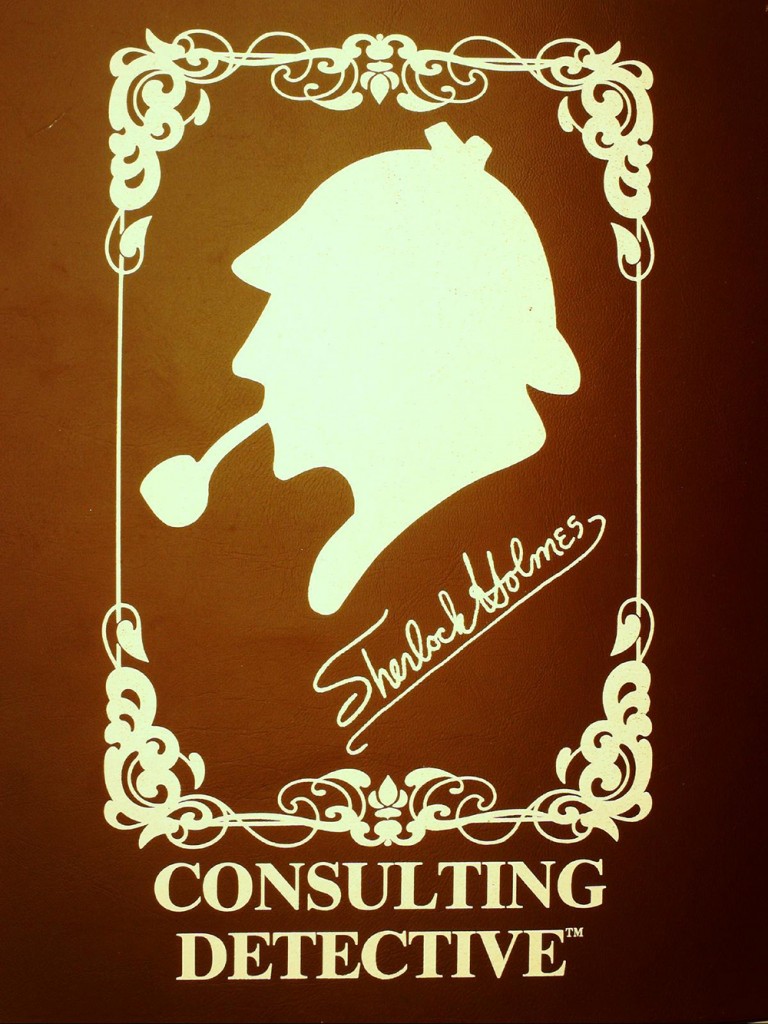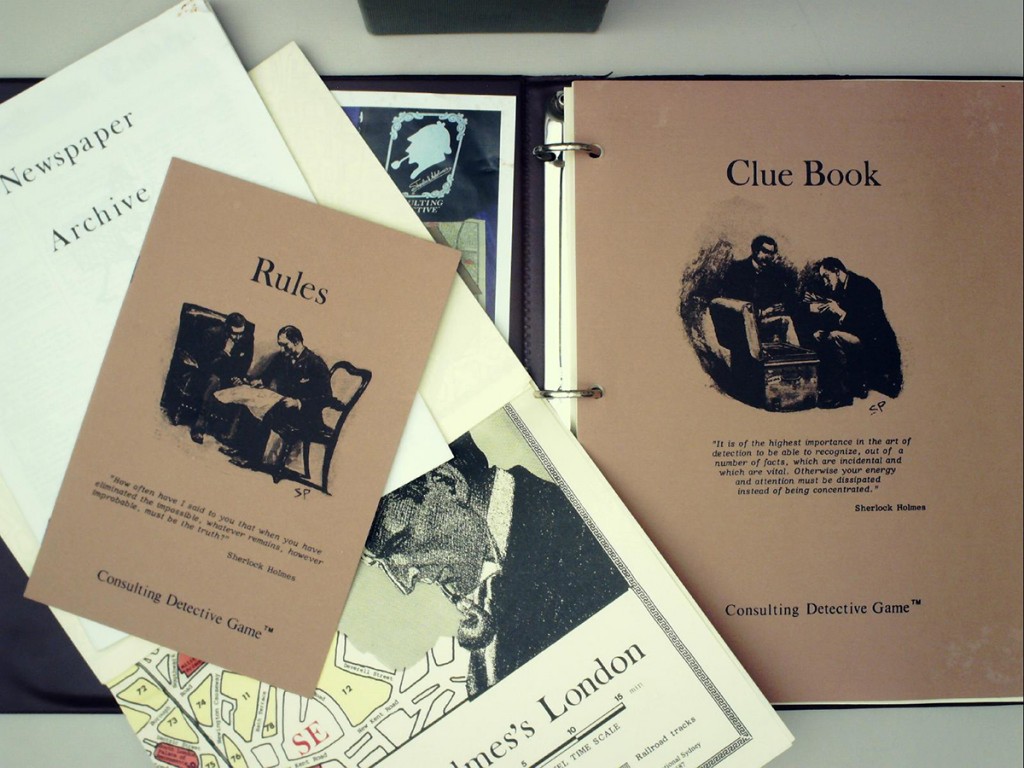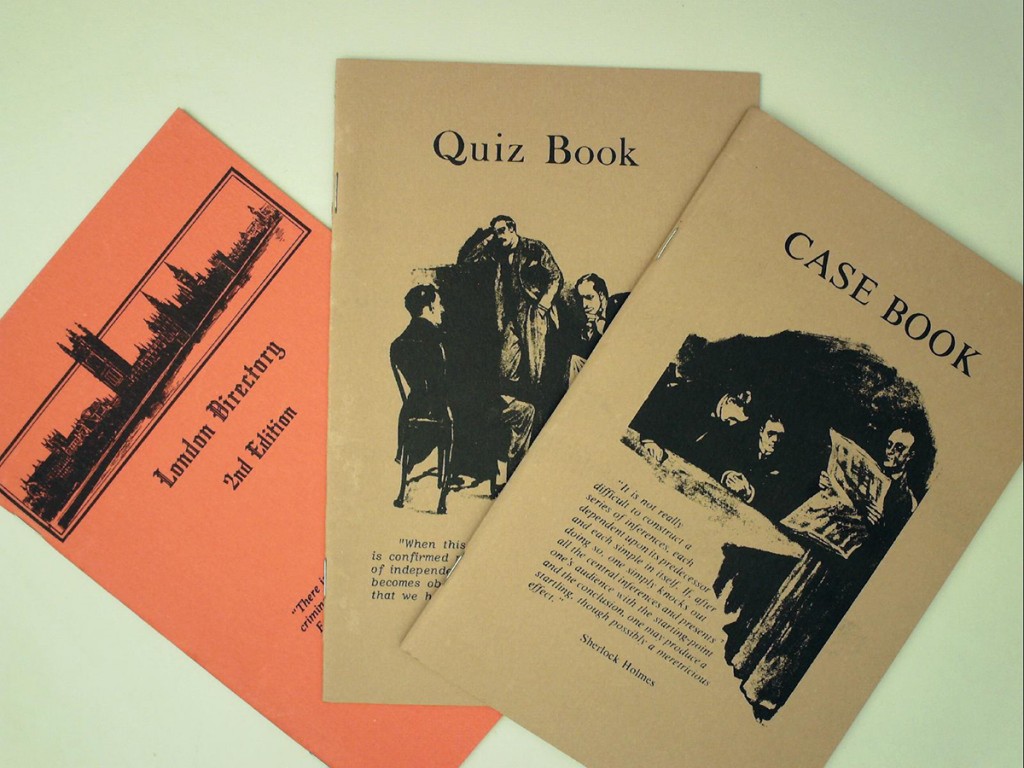 This post is part of an ongoing series featuring items from the Julio Mario Santo Domingo collection.
This post is part of an ongoing series featuring items from the Julio Mario Santo Domingo collection.
Today’s feature demonstrates the Santo Domingo Collection’s diversity of genres and formats. While clearly literary in nature, Sherlock Holmes: consulting detective is not a work of literature. Rather, it’s a game based on Arthur Conan Doyle’s novels, in which players reveal sequences of clues and attempt to be the first to solve the case. (If no one can do so in a timely manner, Holmes himself solves it, resulting in failure for all players.)
Included are books of cases and clues, an archive of fictional newspapers players may consult for further evidence, and a map of Victorian London numbered with “clue points” to which players travel. This copy is of the original and relatively scarce 1981 printing of the game, issued in a brown three-ring binder; a second printing in 1982 comes in a more traditional illustrated box.
Sherlock Holmes’s inclusion in the Santo Domingo collection is easy to justify: the master detective is one of the most famous early examples of drug use by a fictional character. The sign of four (1890), the second Holmes novel, opens with a scene of Holmes injecting himself with a seven-percent solution of cocaine – a practice to which his assistant, Dr. Watson, objects, although the therapeutic and recreational use of the drug was common at the time. Indeed, a young Sigmund Freud began studying cocaine in the 1880s, and thereafter advocated enthusiastically for its utility in treating a number of conditions, among them addiction to alcohol or morphine. In any event, the Sherlock Holmes novels are not the portraits of addiction that often constitute drug literature: Doyle writes Holmes as indulging in drugs only occasionally, when he has no current mystery to occupy his overactive mind.
Sherlock Holmes: consulting detective: Z1033.T68 G73 1981; HOLLIS number 14249554
Thanks to rare book cataloger Ryan Wheeler for contributing this post.


